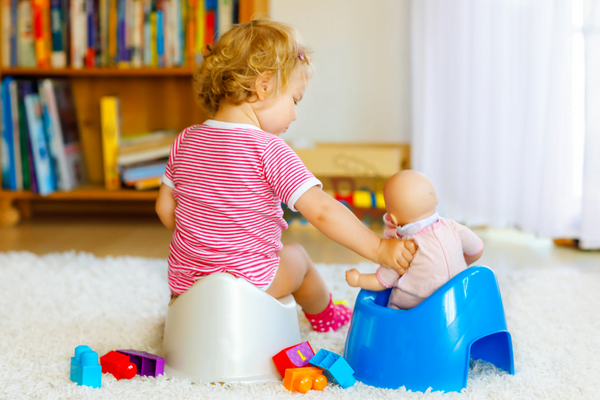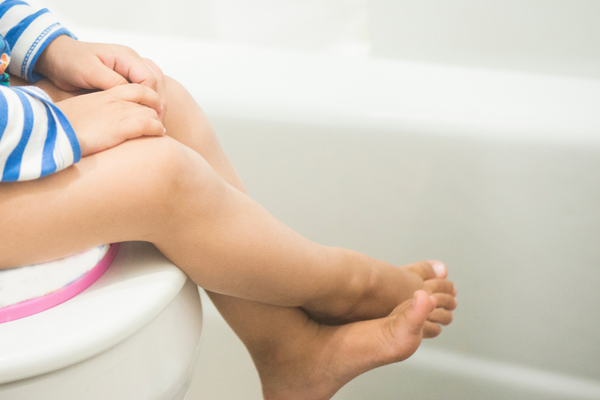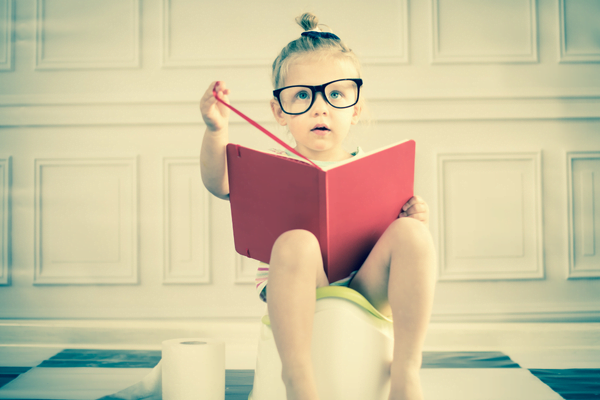It’s about that time again at our house. Time to potty train another “little” that is. So I’ve been inspired to create this blog post, “Successful Potty Training 101”. This will be our 7th child we’ve trained (6th boy). You would think I should be a pro at this by now, but I’m not. Honestly the process is still one I have to work myself up to.
Let’s face it, potty training can be an intimidating task. I’ve been at it long enough to know how unpredictable the process can be. You never know how easy or difficult of a time a child is going to have learning to use the loo. I’ve also had enough children to have examples of each.
There are times, I have felt like supermom though. Like the time I successfully had my new baby on the toilet with me after studying about people groups around the world that don’t use diapers. The thought of not training them to go in a diaper and instead listening to their cues really interested me.
Most of the time however, I have been like the majority of people in the U.S. and used diapers. I have made my own diapers, and I’ve used store bought. I’ve trained them young and trained some older. I’ve had my struggles, but by following a few basic principles like consistency and patience covered with love, I’ve also had success. You can too.
1. Be ready to be consistent!
As with most child training, consistency is key. Training really starts with the parents. I’m not implying you have to train yourself to go potty again. You must however, train yourself to be consistent. You must be available and focused.
If you’re like most parents, up to this point, you have trained your child to go in their diaper. Training them to do something else entirely is not likely to be an overnight process. You’re trying to form in them a new habit and that takes time.
So clear your schedule and be prepared to purposely interrupt it, because potty training takes time. You must be fully committed for success to happen. They are completely depending on you. If you can’t be with your child all the time, or most of the time, then make sure others know your game plan and keep it going, which brings me to tip number two.
2. Have a game plan!
Have a game plan! Don’t go into this special and very important time without a plan! You want potty training to be as positive of an experience as possible for both your child and you. In fact, positivity is one of your greatest tools for success.
Before I begin potty training, I do a lot of positive talking about going on the potty. I work my way there a bit slowly. I also make an association with the potty and what goes in it.
Basically, when I’m about ready to start, I wait for a poo diaper and empty the contents in the potty for junior to see. They then see me flush it and wave good bye or something like that. They now start to see that this is what the potty is for. Once you’re ready to start, your method, timing and rewards must be decided on.

Method
Personally, I never had a lot of success using a training potty. I still keep it in my tool bag, but most of my kids wanted to go on the big potty like everyone else in the family. It makes them feel big. My favorite kid potty though is the BabyBjorn, it’s what we have at home. As far as kid potty’s go, I think it is one of the better designs for comfort and durability. It’s highly rated and comes in different colors as well.
In recent years, my husband has installed special potty seats (like this one from Amazon) with a small option so they don’t fall through. I love these toilet lids! If you do use a training potty, just keep in mind that the process may take longer, because you’ll have to train them to go to the big potty later.
If you do use a little potty, I personally prefer to keep it in the bathroom. This, in my opinion, is cleaner and sends the right message to your child, that this is where we do our business. Make the bathroom a fun and positive place, so they think fondly of the location.
Diapers, expensive pull ups, underwear, or nothing at all, these are your options. I spend some time in the diapers, then introduce a pull up and finally if they are doing well, we go to the underwear. Usually, I’ll make the first batch something they like, like an overpriced Baby Shark pack that I’m likely to purchase soon. This is purely for celebration and motivation. One of my kids did not like the idea of pooing on their favorite cartoon character, so that was an added benefit.
Timing
Typically, 20 to 30 minutes after eating or drinking a child should feel an urge to go. Of course this is not full proof, but this is one of your best times to get them on the potty. Also, before bedtime or a nap and as soon as they wake up are all good times. Save any reward for after the child goes, but do praise them for their efforts.
Meanwhile, you’re waiting (sometimes this takes many attempts). At the first dribble that hits the water (or number 2 if you’re lucky), you celebrate! Cheer, clap, give a reward, praise or both and let others know!
Don’t forget to also make a habit of flushing (often the funnest part for a “little”) and washing hands. You can tone down the celebration a little after the first few times, but keep making it a positive experience.
If they don’t make it to the potty on time, don’t sweat it. Put them on the potty after an accident and gently remind them that this is where we go. If they already know the association and don’t need the reminder, you can still put them on to make sure they are finished. If they feel bad about the accident, try a few encouraging words.
Tips: Pouring a little stream of warm water over the pee pee area can stimulate them to go, if they are having some stage fright (so to speak). Also, if you have an older boy who likes to stand by the big potty like daddy, dropping a few cheerios as targets in the water can entice them to try it out.

Rewards
I’m a big fan of using potty charts and stickers. Some kids like to put them on their chart, some kids like to put them on themselves. However, they all like to pick them out. Whatever your reward, my suggestion is it not be sweets because you’re gonna have lots of trips to the potty, and that will end up being a lot of sugar!
I have to admit, I’ve had those desperate moments with a couple of children that seemed like they just weren’t interested in the potty no matter what I did. Mini marshmallows were what I succumbed to, but once you turn to sweets, you’ll have to eventually wean them off. It’s best to avoid them altogether. Sugar can also have a negative impact on anyone’s attitude, especially a toddler.
Do some thinking ahead of time. Have your chart in place (if you choose to use one) in the bathroom where your child can see it. I have a free downloadable chart down below for your use. Have any other tools in a handy place (books, stickers, rewards, etc..). There are a lot of potty time books (Amazon) out there that can be an encouragement for your child. Tip: Avoid requiring a large amount of successes to receive a reward. Try to keep any reward simple and often. Young ones have a hard time understanding the concept of time, particularly the future. Waiting too long to give praise or rewards could be a discouragement to them.
3. Be flexible.
This may seem contrary to being consistent, but changing your plan can sometimes be necessary. If you’ve given your plan 100%, don’t keep going in a direction that is clearly not working. I wish I could tell you a formula for potty training any child, but that just doesn’t exist. All kids are different, what works for some, may not work for others.
Perhaps your child seems to have a smaller bladder and has to go more often, so then you need to take more trips to the loo. Maybe, they really don’t seem interested in sitting on the potty and you need to pull out a special potty time only book (Amazon) and read it to them. Or maybe the big potty seems a bit scary to them and they prefer a training potty to start with.
Be consistent, but be willing to be flexible as well. Make little changes in your game plan if you feel their needed. Potty training is not a one size fits all process. What methods have worked for some of my children, did not always work well for the others.

4. Be patient and loving.
This may seem like a no brainer, but even though we love our kiddos, we may not always show it outwardly. When life gets busy and crazy at times, it’s easy to just go through the motions. You will not always succeed at getting your child on the potty, and they will fail to make it to the potty on their own. Try to stay positive.
Success often follows a lot of failed attempts. That’s part of the journey. It’s called training for a reason. You have not arrived yet. Accidents happen. Training our children should be an act of love on our part.
Every time we teach our children something, we are teaching more than just the task at hand. We are teaching them how to teach/treat others. Anytime I see an older sibling being loving and patient with a younger one, it warms my heart. I know that the older sibling has been shown love and patience and therefore knows how to give it.
Giving praise and encouragement should be a part of any relationship, especially the one between you and your child. Our words can provide needed support, or spoken harshly can bring discouragement and hurt. Use them carefully.






